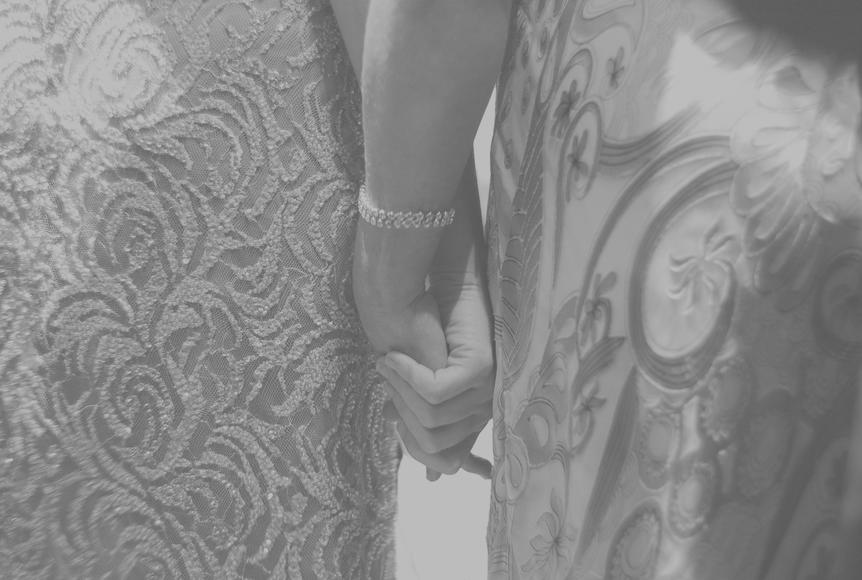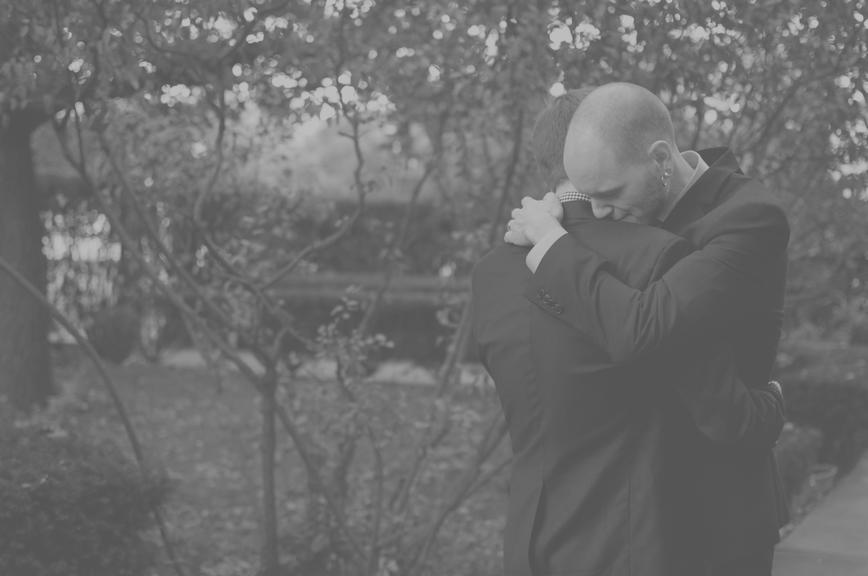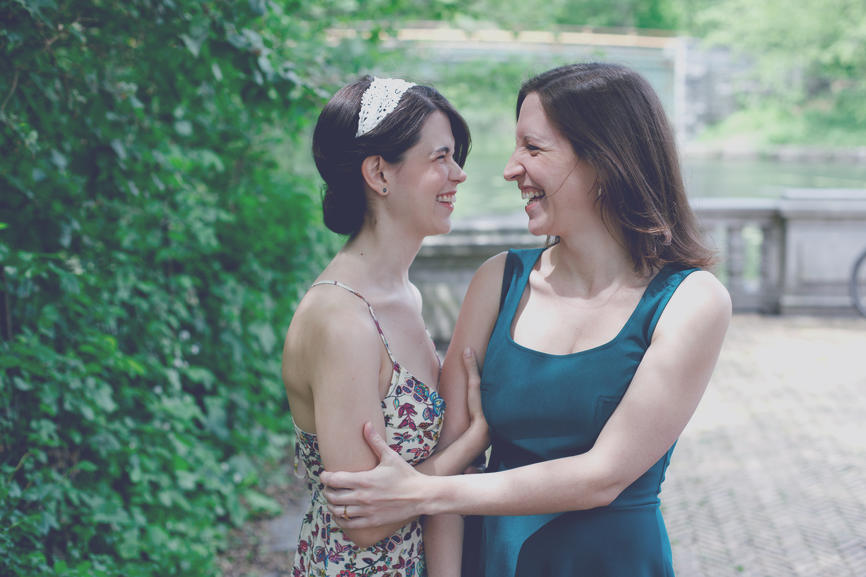With the launch of my firm, I’ve done a few interviews lately, and the same question continues to come up: why focus on the LGBTQ community. I address this in a few ways.
First, it’s my story. As a young(ish), recently married gay man who has been with his spouse for 15 years, the LGBTQ financial experience is very familiar to me. And as one of my writing professors in college said, “you should write what you know.” So in the past three years, you’ve read post that stem from my personal experience like melding money personalities, important discussions about prenups and having the right type of insurance for your family. Now, I take that experience a step further and serve those whose situation with whom I’m most familiar.
Secondly, I think it’s important for the LGBTQ community to have its voice heard. The community has largely been ignored when it comes to mainstream personal finance advice. Despite having powerhouse financial experts like Suze Orman in our corner, we didn’t see our stories reflected on a regular basis. I’m hoping that will change as the fight for equal rights continues. In the meantime, I will do my best to make sure our issues get highlighted and that I address the many financial questions that we have.
Lastly, we need it! While marriage equality has brought much needed simplicity to the financial lives of those of us who choose to get married, we still have a ways to go on issues like wage inequality, workplace insecurity and housing rights. And that’s what I want to discuss today – some reminders of where the LGBTQ community is financially and how we can improve.
The World for the LGBTQ Community Looks Much Different Now
When I first thought of the idea of starting a financial blog for the LGBTQ community, I came across a study by Prudential that explored “the hopes, dreams and fears of LGBT Americans.” I was so excited to find the report because I’d never seen anything like it that specifically focused on the LGBTQ community. I found the statistics interesting and really useful when I made the pitch to my bosses about starting my blog. Ironically, just in time for the launch of my new business, Prudential offered an update.
The update rightly points out that “the world looks much different today” for the LGBTQ community than their last analysis back in 2012. The landmark Obergefell v. Hodges decision has afforded us access to over 1,100 federal benefits, including filing joint tax returns, putting spouses on health insurance on a pre-tax basis, and spousal protections in the event of death.
According to the Williams Institute out of the UCLA law school, we are taking full advantage of the opportunity to marry. In 2013, the year that the Windsor ruling was issued, an estimated total of 230,000 same-sex couples were married, which equated to 21% of all same-sex couples. By June 2015, when Obergfell was decided, 390,000 same-sex couples were married, 38% of all same-sex couples. As of October 2015, 486,000 same-sex couples were married, or 45% of all same-sex couples. Take a moment to let that sink in – 256,000 same-sex couples married in a little over two years.
The Prudential study also saw a huge increase in the marriage rate of its participants. Since 2012, the amount of married participants grew from 8% to 30%. In addition, almost half of those respondents said marriage equality had simplified their finances.
Some Things Have Changed For the Worse
Despite this progress in marriage equality, some of the changes between 2012 and now haven’t been so positive. Below are some of the negative changes that the Prudential study found.
- Lesbian women earn less than heterosexual women, reporting an average annual salary of $45,606 vs. $51,461. (A difference of $5,855)
- Gay men reported earning an average of $56,936, with heterosexual men earning $83,469. (A difference of $26,533).
- LGBTQ respondents surveyed in 2016 are less likely to have started saving or investing for retirement, to have insurance products, and to have a will or estate plan than those surveyed in 2012 or general population respondents
- More LGBTQ respondents consider themselves “spenders,”— 48 percent compared to 32 percent of the general population. The respondents spending patterns confirmed that they spend more and save less, compared to the general population.
- Overall the LGBT population owned less financial planning products (such as mutual funds, life insurance or will) than the general population.
- 41% of respondents today, compared to 31% in 2012, said they are struggling financially.
These statistics clearly debunk the “Rich Gay Myth”. In addition, they highlight a need for more financial progress, especially when it comes to the job front.
Currently, there is no comprehensive federal law that protects LGBTQ people from getting fired for their sexual orientation. In fact, the Seventh Circuit Court recently held that Title VII of the Civil Rights Act does not prohibit sexual orientation discrimination. As such, the protection of LGBTQ citizens is left up to the individual states. Currently only 22 states have an anti-discrimination statute that includes sexual orientation (two of those states do not include sexual identity, or the “T”) for private employers.
There’s Hope
One thing that I really appreciate about Prudential’s survey was it took into account the goals of our community. For example, the LGBTQ respondents were much more likely than the general population respondents to say that they need to gain more knowledge in order to tackle their financial goals. They also mentioned that they didn’t feel fully prepared because they don’t’ know their options, don’t know how best to evaluate their options or don’t know how to get started.
As I’ve said before, my main motivation for starting my blog and my firm was to help decrease this personal finance knowledge gap and give our community the tools that we need to continue to make substantial progress on achieving social and economic rights. While the survey found that fewer LGBTQ respondents (versus general population) work with a financial professional, those that did had loftier financial goals, strong financial confidence and more successful saving.
Working with me one on one can help you figure out the best ways to pay down debt, how to maximize saving and investing and how to get started with purchasing products like life and disability insurance. And as I’ve already pointed out, you don’t need to be a millionaire to get or use the advice of a financial planner.
In addition to offering my personal services, I now have close to 300 blog posts that give you free, personal finance tips that that you can use. And I’m not the only one. I’ve recently become apart of the Queer Money Facebook group whose mission is to create a strong LGBTQ community through financial success. You also have other financial bloggers like Debt Free Guys and David Rae, who focus on helping the LGBT community.
Come join us on our sites, Facebook and Twitter to let us know what concerns you most and what you would like to know about personal finance. We are here to empower you.





